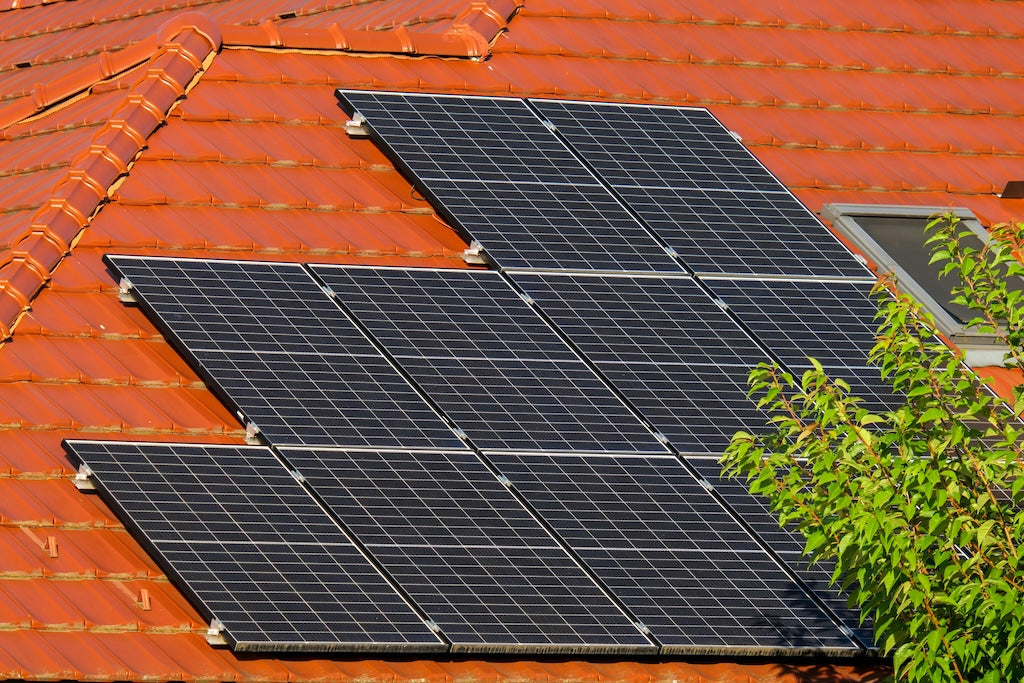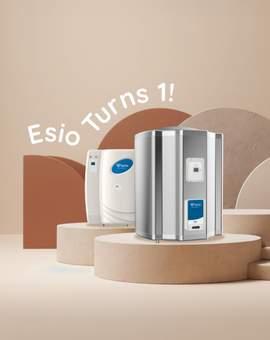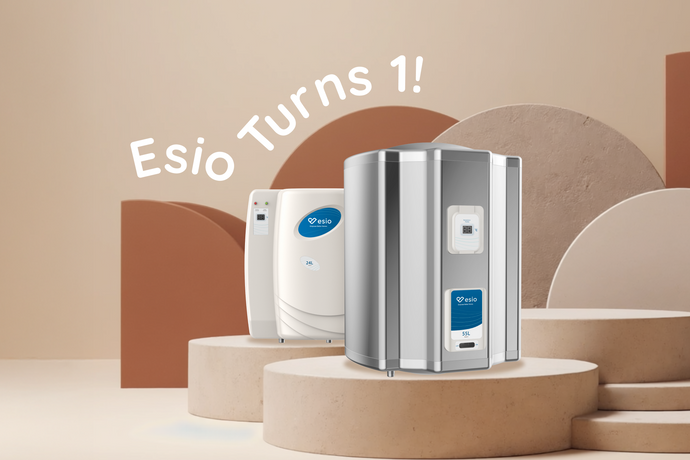Introduction
Solar energy adoption is on the rise in Malaysia, driven by increasing electricity costs and growing environmental awareness. As of early 2025, Malaysia surpassed 2 GW in installed solar capacity, with residential users accounting for nearly 17% of installations under national programs. As more homeowners turn to solar technologies, it's important to understand that not all solar systems offer the same long term value.
Traditionally, many Malaysian households have installed solar water heaters to reduce electricity usage for daily hot water needs. These systems use rooftop solar collectors to heat and store water, offering an alternative to conventional electric heaters.

Photo by Viadimir Srajber from Pexels
However, a new shift is underway. As solar photovoltaic (PV) systems become more affordable and accessible, more Malaysians are realising that solar panels used for electricity generation can deliver far greater savings, especially when paired with efficient storage water heaters like those from Esio.
In this article, we’ll explore why solar PV systems may be the smarter long term investment, and how traditional solar water heaters could be costing you more than expected by blocking valuable rooftop space that could otherwise generate hundreds or even thousands of ringgit in annual energy savings. We’ll cover:
- Understanding the Two Technologies
- The Cost of Blocking Solar Panels
- Performance and Practicality During Rainy Seasons
- Solar PV + Storage Water Heater
- Real Cost Comparison Over 1 Year
- Why More Malaysians Are Making the Switch
- Conclusion
Understanding the Two Technologies
Solar Water Heater
A solar water heater uses solar collectors to absorb sunlight and heat water stored in an insulated tank for household use which is usually installed on rooftops. It’s a simple and time-tested way to reduce electricity usage for hot water.
 Key Features:
Key Features:
- Uses sunlight to heat water directly
- Requires large rooftop collectors and a storage tank
- Often includes a backup electric heater for cloudy or rainy days
Limitations:
- Consumes valuable roof space that could be used for solar panels
- Inefficient during rainy or cloudy weather, common in Malaysia
- Typically heats large volumes of water regardless of actual demand, resulting in higher electricity use when the sun isn’t out
Solar PV + Storage Water Heater
A solar photovoltaic (PV) system converts sunlight into electricity, which powers your entire home, including your water heater. When paired with a high efficiency storage water heater like Esio, this setup allows for reliable hot water and flexible energy use throughout your household.
 Key Features:
Key Features:
- Converts sunlight into electricity that can power any device, including water heaters, lights, and appliances
- Excess energy can be stored or sold back to the grid (e.g., via Net Energy Metering)
- Compatible with compact, energy efficient storage water heaters that require less power and space
Advantages Over Solar Water Heaters:
- Maximises rooftop real estate for greater return on investment
- All weather reliability when paired with electric water heaters
- More control over energy usage, with smarter, programmable systems
The Cost of Blocking Solar Panels
Typical Malaysian Roof Size and Usable Space
Most residential homes in Malaysia, especially terrace, semi-detached, and bungalow properties have limited usable rooftop area. According to solar installers, a standard 4 kWp system equivalent to around 8–12 solar panels on a terrace house requires approximately 9–13 m² of roof space.
Roof Size Meets Solar Space
- A typical Malaysian terrace house can install 8–12 panels, requiring around 9–13 m² for efficient setup
- Preserve space for optimal orientation, avoiding shading from trees or nearby structures
 Photo by Jan Van Bizar
Photo by Jan Van Bizar
How Solar Water Heaters Occupy Valuable Rooftop Space
A standard solar water heater system with a 300L tank typically includes 2 to 3 large solar thermal collector panels, each about the size of a PV panel. Including spacing, bracing, and the tank itself, these systems can occupy the equivalent area of 4 to 6 solar PV panels.
This becomes a problem for homeowners interested in maximising their rooftop for energy generation, especially as Malaysia pushes forward with solar-friendly initiatives like Net Energy Metering (NEM).
What’s the Real Cost of This Lost Space?
By occupying the same area that could otherwise support 4–6 solar PV panels, a solar water heater limits your ability to offset household electricity consumption—potentially costing you up to RM2,160 or more annually.
 Photo by SHVETS production from Pexels
Photo by SHVETS production from Pexels
Here’s the Math:
- 1 modern solar PV panel (450W–550W) typically produces 1.6–2.5 kWh/day in Malaysia's sunny climate
-
Monthly output:
- 4 panels: ~240 kWh/month
- 6 panels: ~360 kWh/month
- TNB tariff (Tier 2–3): RM0.4443–RM0.60/kWh
-
Potential missed savings:
- RM120–RM180/month
- RM2,160/year or more
In other words, the space used by a solar water heater could have paid for your electric water heating many times over, especially with an energy-efficient storage water heater like Esio.
Summary Table: Rooftop Usage vs. Energy Return
|
System Type |
Rooftop Space Used |
Energy Output |
Electricity Bill Savings |
Flexibility |
|
Solar Water Heater |
4-6 panel space |
Hot water only (weather dependent) |
None / low (requires backup) |
Low (dedicated use only) |
|
Solar PV + Storage Water Heater |
4-6 panel space |
240–360 kWh/month usable electricity |
RM120–RM180/month or RM2,160/year |
High (power whole home) |
Performance & Practicality During Rainy Seasons
Malaysia’s Climate: Rain is the Norm, Not the Exception
Malaysia experiences a tropical rainforest climate, with high humidity and frequent rainfall throughout the year. According to MET Malaysia, over 50% of the year (up to 60% in some regions) is rainy or heavily overcast. During the Northeast and Southwest monsoons, prolonged cloudy conditions can persist for weeks at a time, significantly limiting sunlight exposure.
 Photo by TARUN RAJ BN on Unsplash
Photo by TARUN RAJ BN on Unsplash
The Solar Water Heater's Rainy-Day Dilemma
Solar water heaters are designed to operate at peak performance under direct sunlight. However, when the skies turn grey, these systems fail to heat water effectively. As a result, they automatically switch to backup electric heating to maintain usable water temperatures.
A typical solar water heater with a 300L tank consumes up to 12.6 kWh of electricity per heating cycle during rainy days, since it must reheat a large volume of water from a lower baseline temperature.
That’s over 5 times more energy than some compact electric storage heaters.
Esio Storage Water Heaters: Built for All-Weather Efficiency
In contrast, the Esio EM-5538H storage water heater is unaffected by weather conditions. Whether it’s a sunny afternoon or a week of thunderstorms, it delivers fast, reliable hot water at consistent energy usage. With a 55L tank and 3.8kW heating element, it only consumes 2.31 kWh per full heating cycle.
Thanks to its high-efficiency insulation and hybrid tank design, the Esio heater avoids unnecessary reheating and minimises energy waste, even with multiple daily uses.

What’s the Impact on Energy Bills and Eco Goals?
|
System Type |
Capacity |
Energy Use per Cycle |
Performance on Rainy Days |
|
Solar Water Heater |
300L |
12.6kWh |
Weak, requires electric backup |
|
Esio EM-5538H |
55L |
2.31kWh |
Strong, consistent all weather use |
While solar water heaters appear eco-friendly on paper, their high backup electricity usage during overcast days often offsets their environmental benefits. Worse, the unpredictable performance can lead to higher electricity bills and inconsistent comfort, especially for families that need hot water throughout the day.
With Esio storage heaters, you get predictable costs, year-round reliability, and energy-conscious performance, rain or shine.
Solar PV + Esio Storage Heater: The Smart Combo for Maximum Value
Why Solar PV Panels Offer More Value Than Solar Water Heaters
When it comes to maximising the return on your rooftop investment, solar photovoltaic (PV) panels paired with an Esio storage water heater deliver superior value, flexibility, and long-term savings compared to solar water heaters alone.
Here’s why more Malaysian homeowners are making the switch:
1. Powers the Entire Home – Not Just Hot Water
Solar PV panels convert sunlight into usable electricity, which can power your entire household, including lighting, appliances, air conditioning, and even EV chargers. Unlike solar water heaters, which only heat water, solar PV brings whole-home benefits, translating into more meaningful savings on your monthly electricity bills.
 Photo by Max Vakhtbovycn from Pexels
Photo by Max Vakhtbovycn from Pexels
2. Eligible for NEM (Net Energy Metering)
Malaysia’s Net Energy Metering (NEM) 3.0 program allows homeowners to export excess solar electricity back to the grid, earning rebates or credits that reduce future energy bills. Solar PV systems qualify for NEM, but solar water heaters do not.
This means solar PV owners can lower their energy bills and get paid for extra solar power, which is a double benefit solar water heaters simply can’t match.
3. Esio Storage Heaters Work Seamlessly with Solar PV
Esio storage water heaters are designed to work with grid or solar electricity, making them the perfect match for solar PV systems. They don’t require rooftop space, so you don’t have to sacrifice valuable panel area just to get hot water.
Their exclusive patented Thermal Amplification Tech™ seamlessly integrates instant and storage water heating for reliable high flow, fast heating, and consistent temperatures.

The redesigned inner tank prevents cold water from mixing with hot water, minimising temperature fluctuations. Let you enjoy up to 400% more hot water and a luxurious bathing experience at home.
4. All-Weather Reliability with Solar-Powered Savings
While solar water heaters struggle during cloudy or rainy days, Esio storage heaters deliver hot water consistently, regardless of the weather. And when powered by your solar PV system, you still enjoy clean, renewable energy without sacrificing performance or comfort.
With Esio, you get the best of both worlds: fast, reliable hot water rain or shine, and the solar savings that make your investment truly worthwhile.
Summary: Solar Water Heater vs. Solar PV + Esio Heater
|
Feature |
Solar Water Heater |
Solar PV + Esio Storage Heater |
|
Rooftop Usage |
Occupies 4-6 panels |
Frees up roof space for more PV panels |
|
Power Output |
Heats water only |
Powers the entire home |
|
Eligible for NEM |
No |
Yes |
|
Performance on Rainy Days |
Unreliable, need backup |
Reliable and consistent |
|
Systeme Flexibility & Scalability |
Limited |
High - can expand PV anytime |
|
Energy Savings Potential |
Moderate |
High (up to RM2,600+ per year) |
Real Cost Comparison Over 1 Year
For homeowners deciding between a solar water heater and a solar PV system paired with an energy-efficient storage water heater, the financial impact can be significant, especially when you factor in the rooftop space each system consumes.
 Photo by Kelly from Pexels
Photo by Kelly from Pexels
The Rooftop Trade-Off
A solar water heater typically occupies space equivalent to 4–6 solar PV panels. In Malaysia, where one PV panel can generate an estimated 60 kWh/month, this translates into a significant loss in potential energy savings. Let’s break it down.
Assumptions
- Average output per panel/month: 60 kWh
- TNB tariff (Tier 2–3): RM0.4443–RM0.60 per kWh
- Number of blocked panels by solar water heater: 4–6 panels
Estimated Annual Loss in Savings
|
Blocked PV Panels |
Monthly Output (kWh) |
Monthly Lost Savings (RM) |
Annual Lost Savings (RM) |
|
4 panels |
240 kWh |
RM106.63 – RM144.00 |
RM1,280 – RM1,728 |
|
5 panels |
300 kWh |
RM133.29 – RM180.00 |
RM1,599 – RM2,160 |
|
6 panels |
360 kWh |
RM159.95 – RM216.00 |
RM1,919 – RM2,592 |
What This Means for You
By choosing a solar water heater, you may lose the opportunity to save over RM1,300–RM2,600 annually, just from the rooftop space it consumes. In contrast, installing solar PV panels plus an Esio storage water heater lets you:
- Maximise your energy generation potential
- Enjoy reliable hot water year-round
- Qualify for Net Energy Metering (NEM) credits
- Save thousands annually through smart rooftop usage
 Photo by Kindel Media from Pexels
Photo by Kindel Media from Pexels
Why More Malaysians Are Making the Switch
Malaysians are becoming more energy-conscious, not just about the environment, but about long-term value, household savings, and future-proofing their homes. This has led to a rising demand for solar photovoltaic (PV) systems, driven by:
- Attractive government incentives such as the Net Energy Metering (NEM) scheme
- Higher electricity tariffs motivating homeowners to generate their own power
- Long-term return on investment from reduced energy bills
At the same time, storage water heaters are gaining widespread popularity for their weather independent performance, fast heating speed, and low running costs. More homeowners are discovering that pairing solar PV with a high-efficiency storage heater like Esio delivers:
- Reliable hot water year-round, rain or shine
- Up to 50% lower electricity usage thanks to Esio's patented technology
- Smart space-saving, as Esio systems don’t compete for rooftop space like solar water heaters
- Durable components and 12-Tier safety features that ensure long-lasting performance with minimal maintenance
By choosing solar PV + Esio, Malaysian households can fully utilise their rooftop for clean energy generation while enjoying modern hot water comfort, without the limitations of traditional solar water heaters.

Conclusion: Unlock Your Rooftop’s Full Potential
Solar water heaters may offer some savings, but at a hidden cost. By occupying valuable rooftop space, they limit the number of solar PV panels you can install, reducing your potential energy savings by up to RM2,600 per year. And during Malaysia’s frequent rainy seasons, their dependence on backup electricity further undermines their efficiency.
In contrast, Esio storage water heaters are compact, high-performance, and designed to work seamlessly with solar PV systems. Together, they offer a smarter, scalable, and more cost-effective solution, maximising both your comfort and your long-term energy savings.
Visit my.esiohome.com to explore Esio models or talk to our team about future-proofing your home today.
Disclaimer: Savings estimates and calculations are based on assumptions under Malaysia’s NEM 3.0 program, which ended on 30 June 2025. Future incentive structures may change, please refer to official updates from the Sustainable Energy Development Authority (SEDA) for the latest program information.



